Peja is the top destination that awaits you in Kosovo. With that much needed opinion that nobody asked for out of the way, let me now try my best in convincing you why that is the case with a short article that is more reminiscent of a hastily prepared slideshow than a carefully written travel blog post. After all, this seems to be the running theme of this website so far!
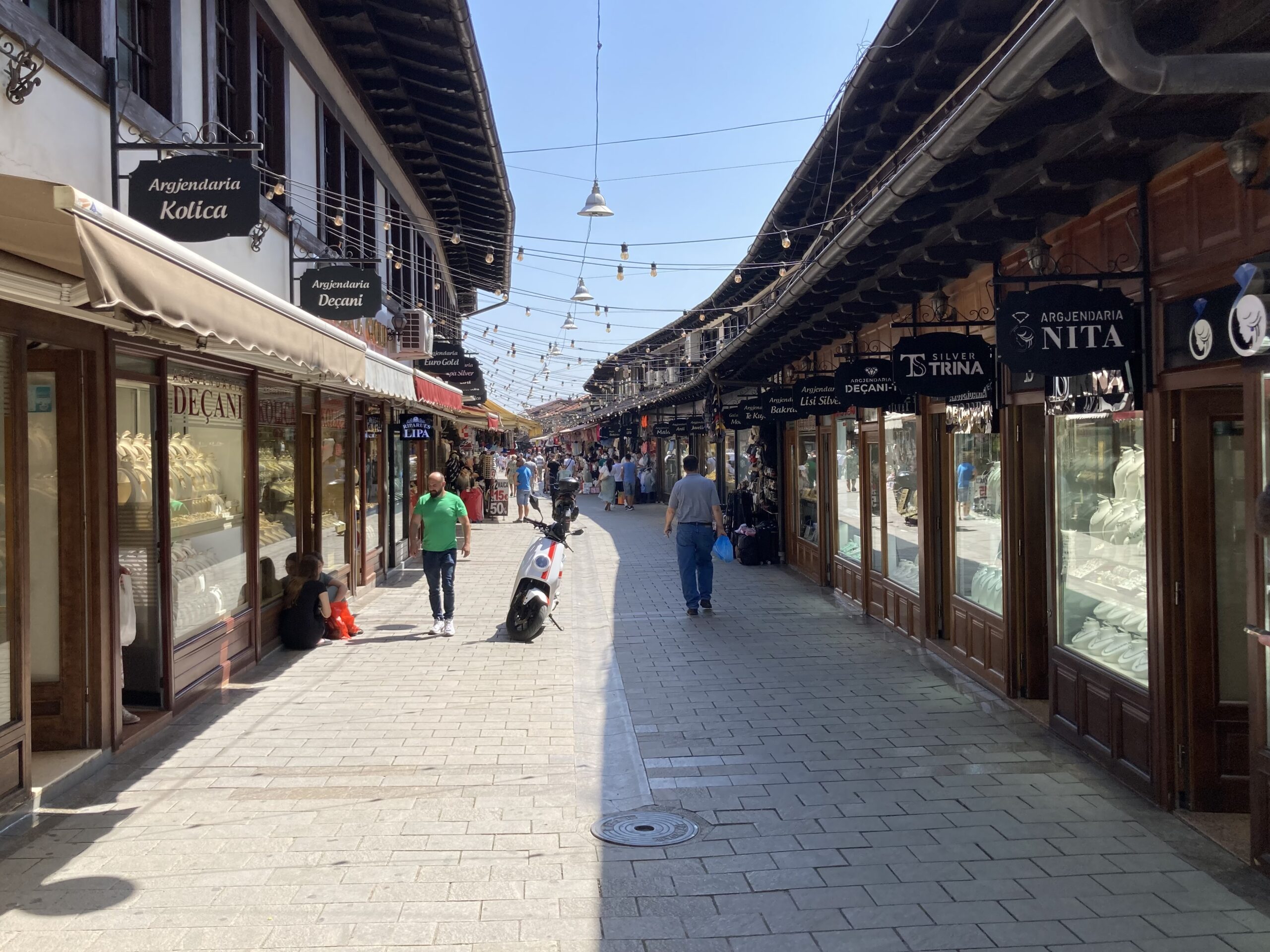
I arrived at Peja after a two-hour bus ride from Pristina. In fact, said bus ride may have been a bit longer than declared. Thanks to the beautiful scenery that you get to see near the end of that journey, it was not as much of a chore as it would have been. While the bus station of Peja is not in the dead center of the city, after just a five-minute walk you can already find yourself here, in the old bazaar of Peja. This whole area is so Ottoman in its design and vibe that it would not feel out of place in any small Turkish town. In fact, it reminded me of my own hometown quite dearly. You can buy all sorts of “oriental” goodies here, and some of these prices (even for tourists) seemed like a great bargain to me. After buying a hat for my mother, we moved on for the next part of this daytrip.
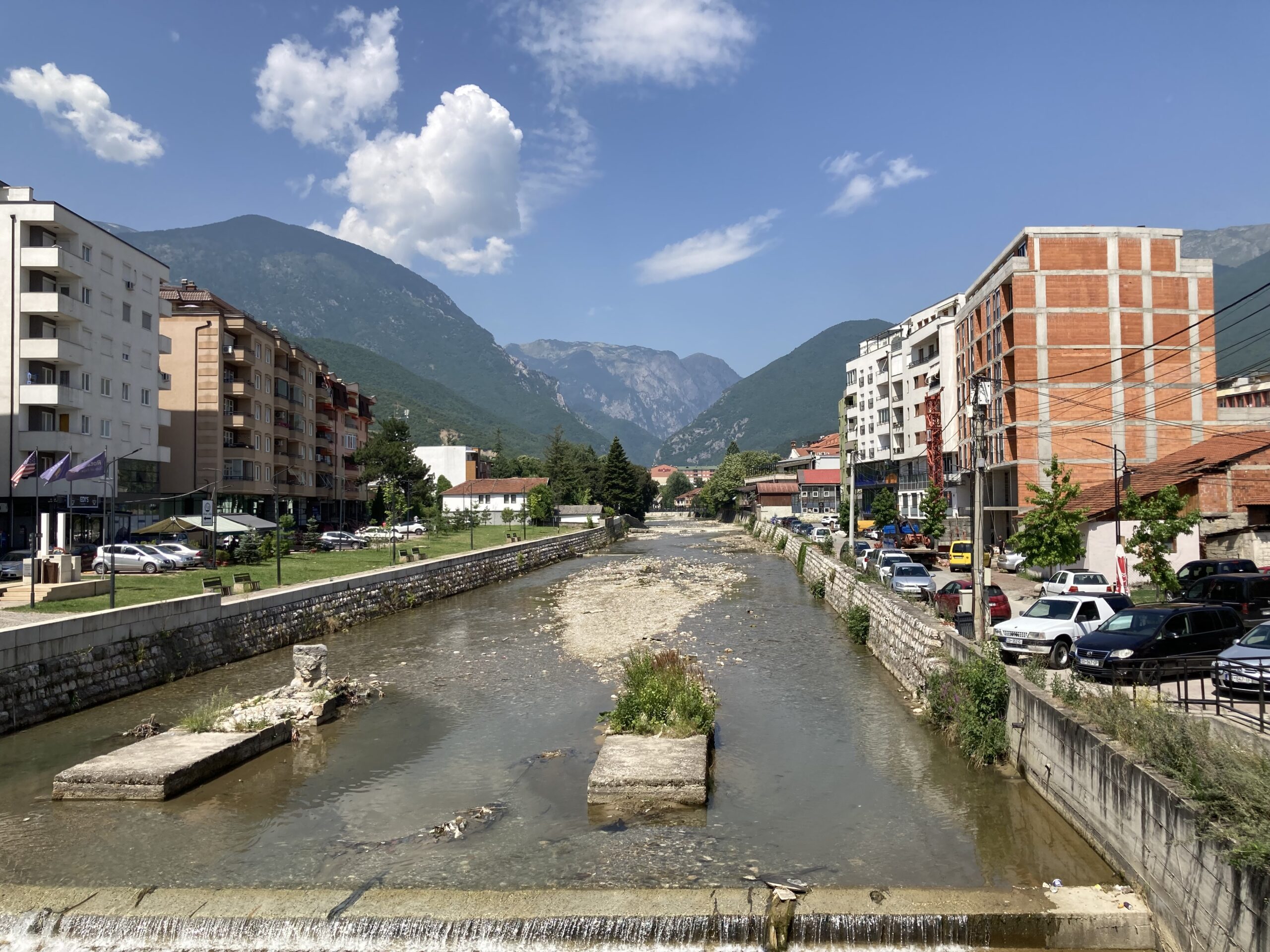
Peja, like most cities in the region, has a river that divides it. In this case, this mighty river is named Peja Bistrica. I say mighty, but it looks puny. Well, I was there mid-July, which is not the best time for any river in the Northern Hemisphere… However, rest assured, this river flows pretty mightily when the time is right, at least that is what I have been told.

On the other side of the river, you will be greeted with a most peculiar memorial. Kosovo is home to a million different memorials, but most have to do with Kosovo quite directly. This one, on the other hand, is more relevant for Kosovo’s main supporter, the United States of America. As you can see, it is dedicated to the tragedy that took place on 11 September 2001, which just happened to be the very first piece of news that I vividly remember as a kid. You can quite literally see a part of the World Trade Center preserved here. Surely, it would be an understatement to consider Kosovars as pro-American. I am pretty sure even most American cities lack a memorial like this today, whereas a small town in Kosovo is out there flaunting one.
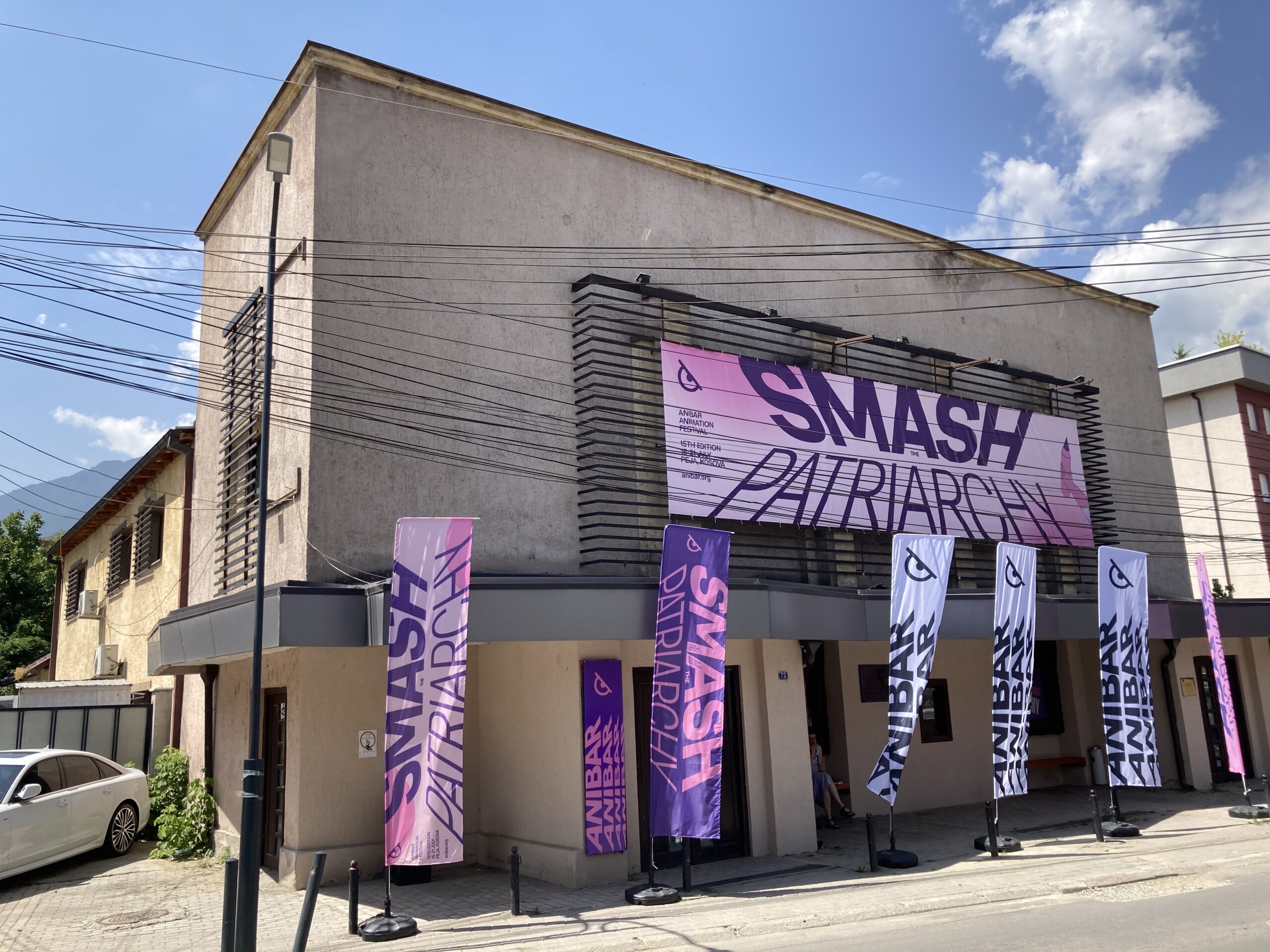
Peja flaunts a few other things as well. It has a few decent examples of Yugoslav architecture, though the popular ones like the Kinema Jusuf Gervalla that is photographed above did not manage to satisfy me one bit. Thankfully, I would find a much more interesting looking building down the line, but you will have to wait for that one for a few more minutes.
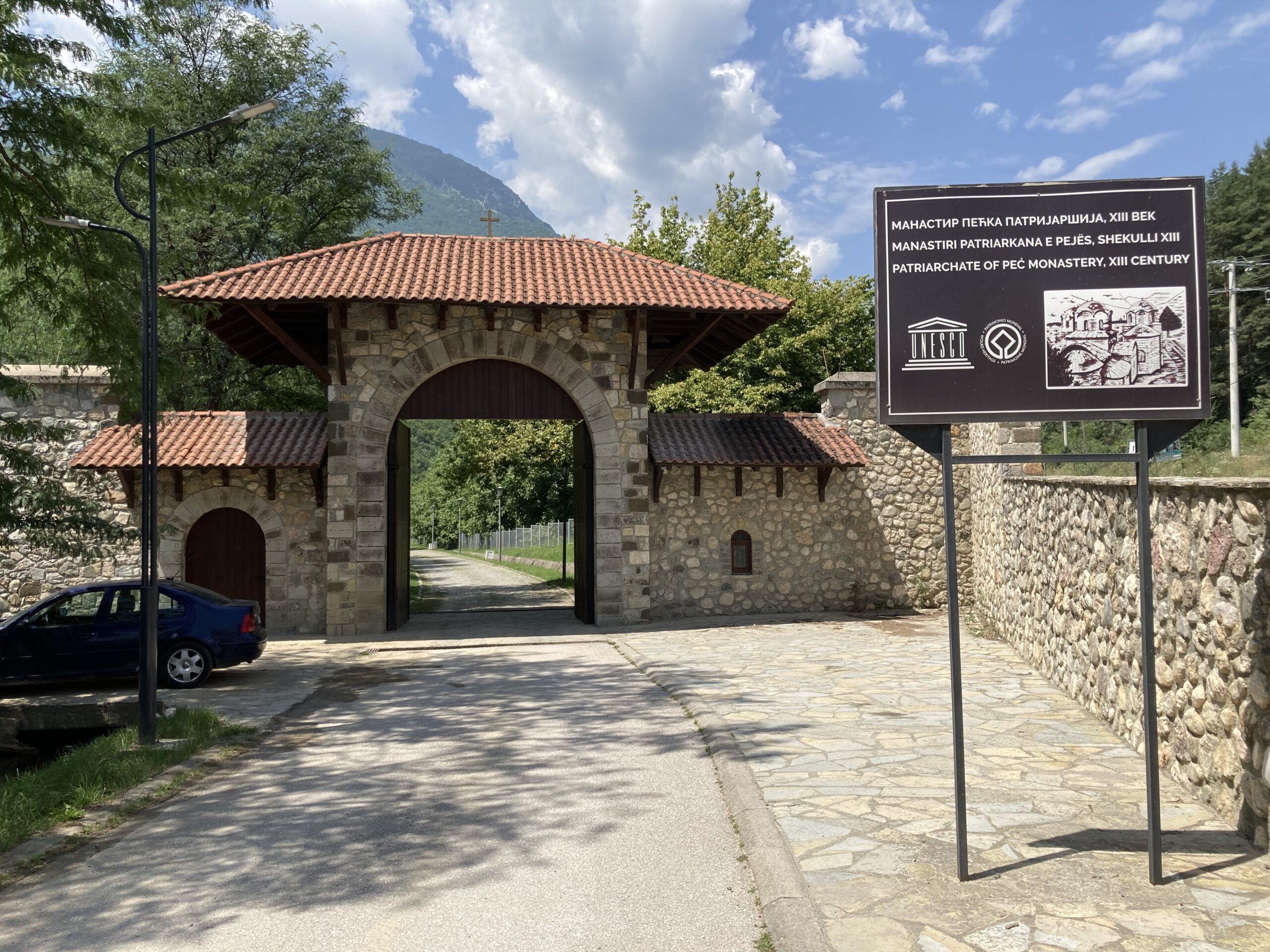
Eventually, I made it to the reason that brought me to Peja, and perhaps to Kosovo, in the first place: The Serbian Orthodox Patriarchate of Pec Monastery. This is no ordinary holy site, but a fully-fledged spiritual center for all Serbian Orthodox believers out there. You will be asked for your passport at the entrance so bring one with you.
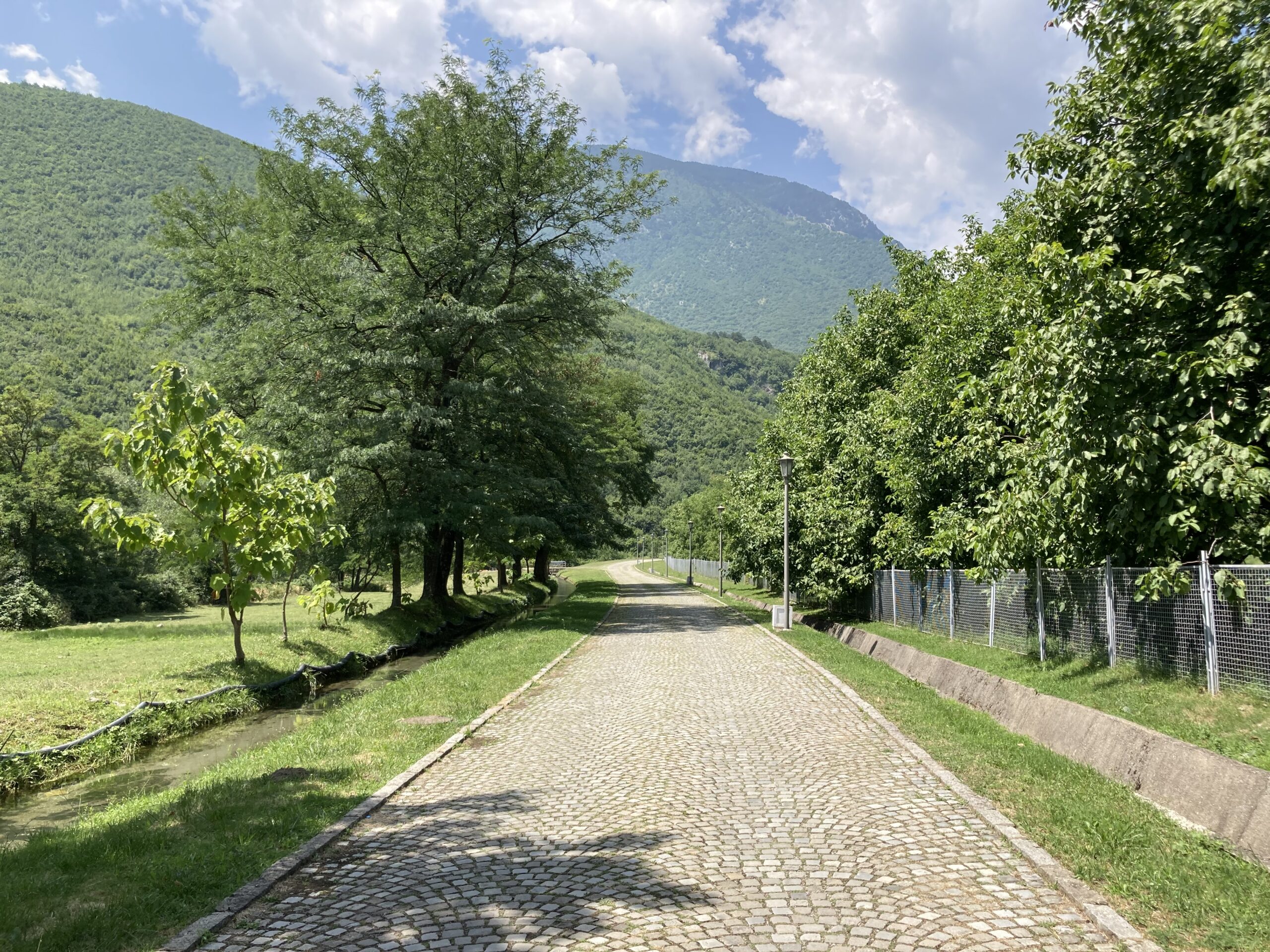
Once you go past the main gate of the patriarchate, you will be a teleported to a whole new dimension. You forget about the conflict in the region for a while. You stop thinking about the issues, the problems, the solutions. It is an extraordinarily well-kept complex, with a tiny creek along its main single lane road.
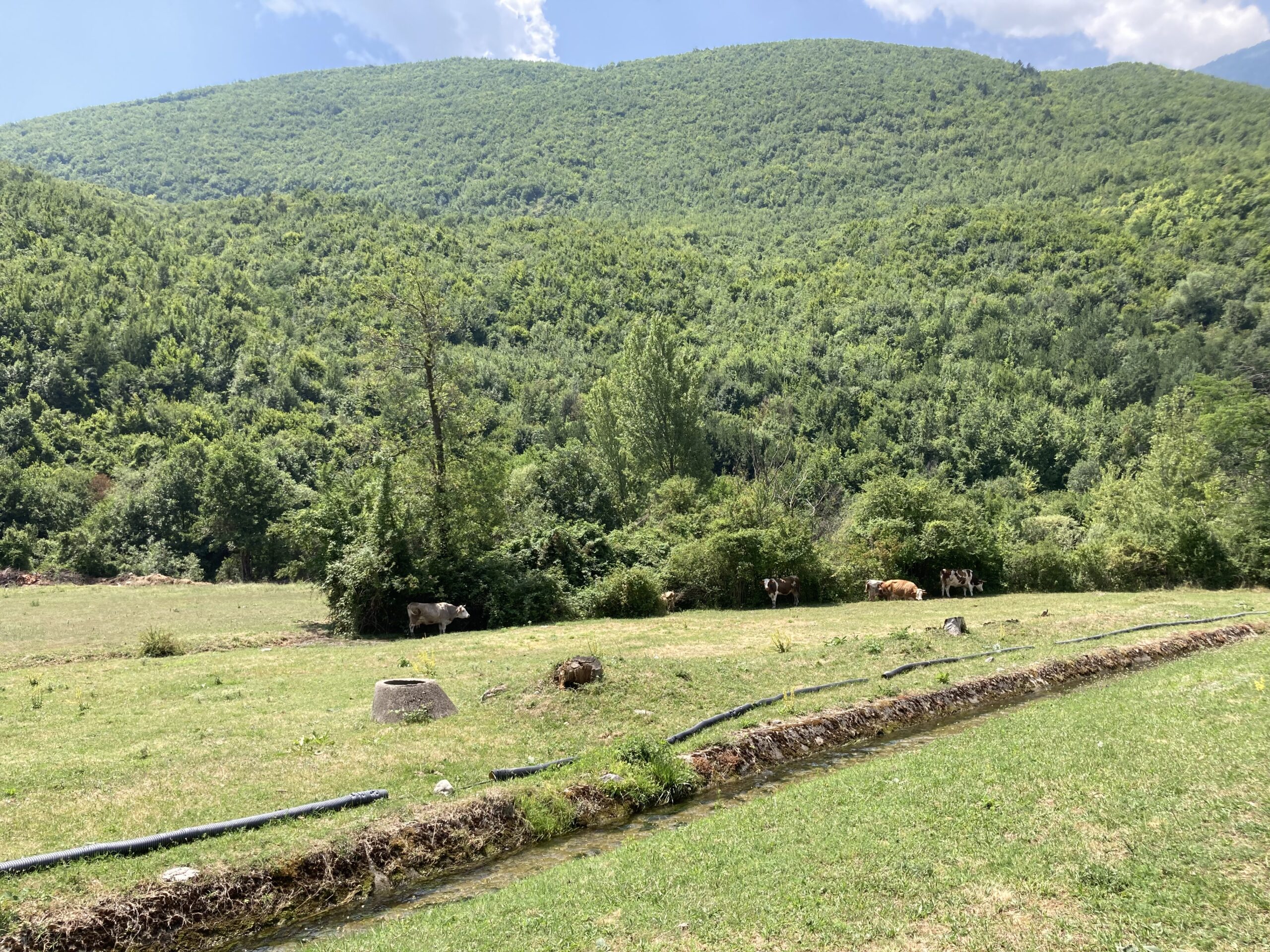
The beautiful mountains that separate this part of the world from Montenegro certainly help with that feeling, but that is not all there is to it. There are also these lovely cows to gaze at and very well trimmed grass to talk about when one wants to explain the serenity of the area.
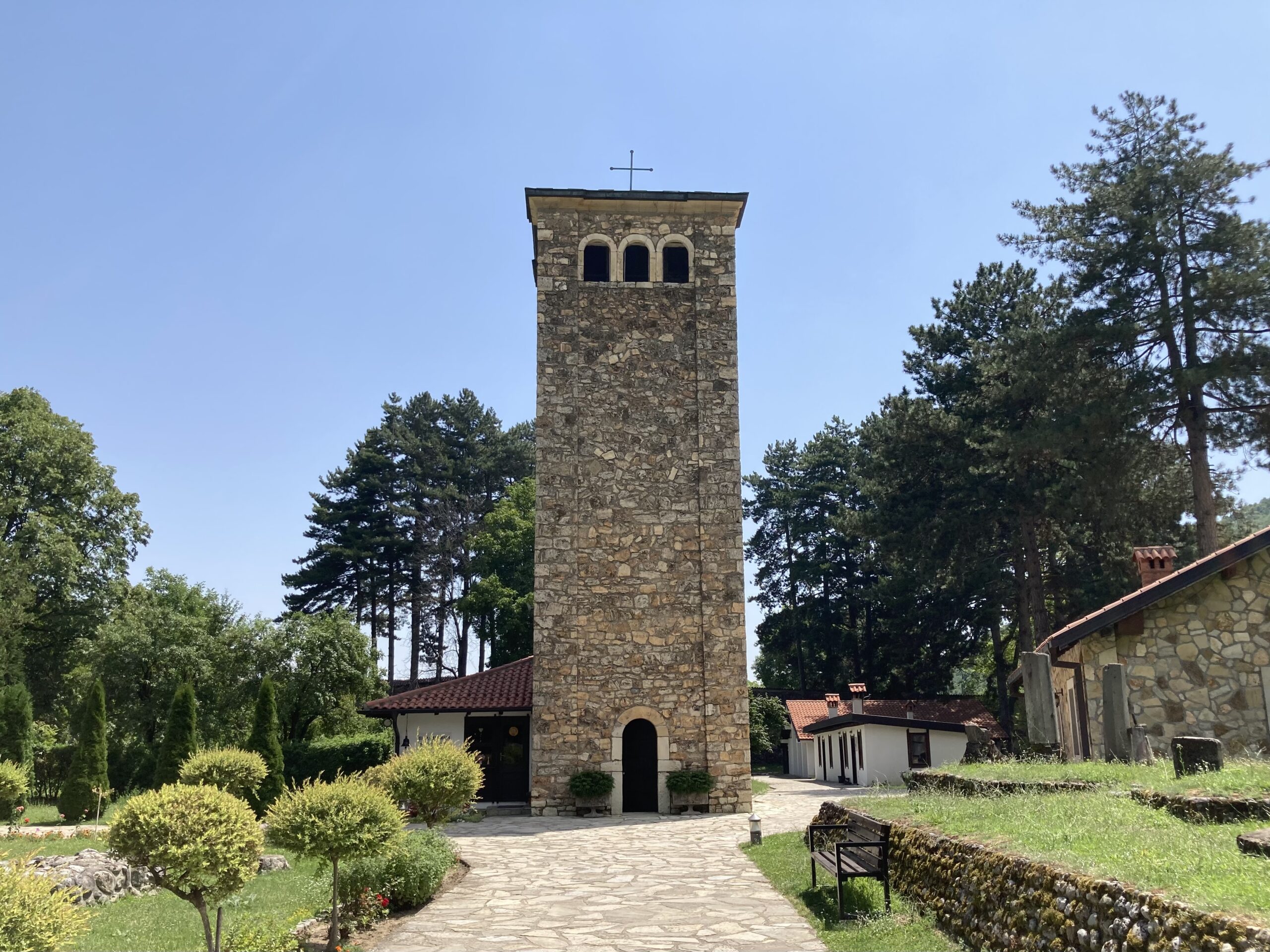
After a short but certainly wonderful walk along that road, you will arrive at the main religious complex itself. Here you will be greeted by a tower to your right, and a lot of buildings to your left. Those are used by the clergy that calls this piece of heaven home. You will not be allowed past a certain point going left, but I did hear that there are sometimes tours organized by nuns, which could let you explore that bit of the complex as well.
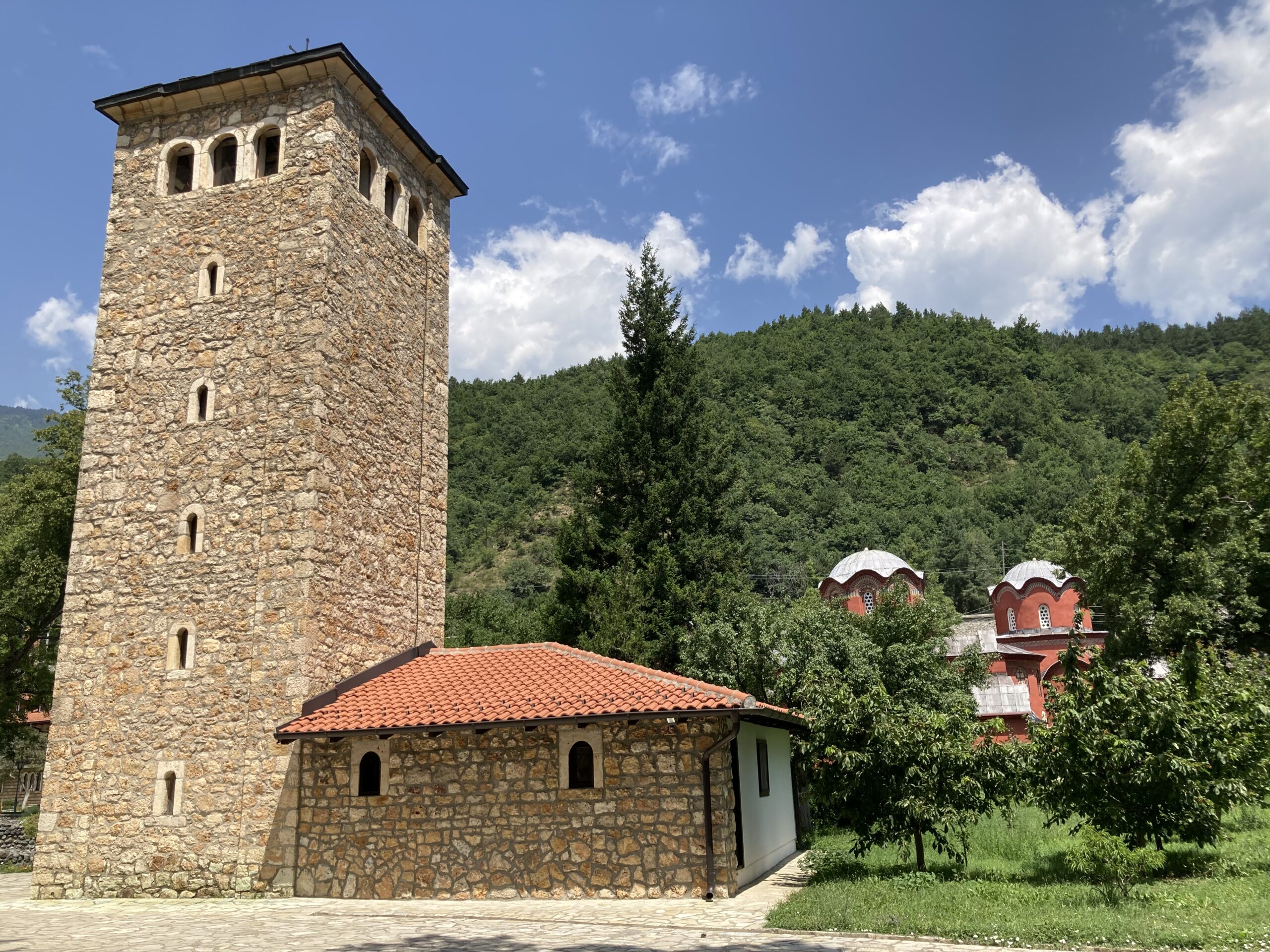
In any case, once you make your way to the tower, you will immediately start seeing the patriarchate itself peeking its head above the trees that try to cover it. Its red walls are welcoming to say the least, and with literally no one else around, I ventured into this ancient temple with much anticipation.
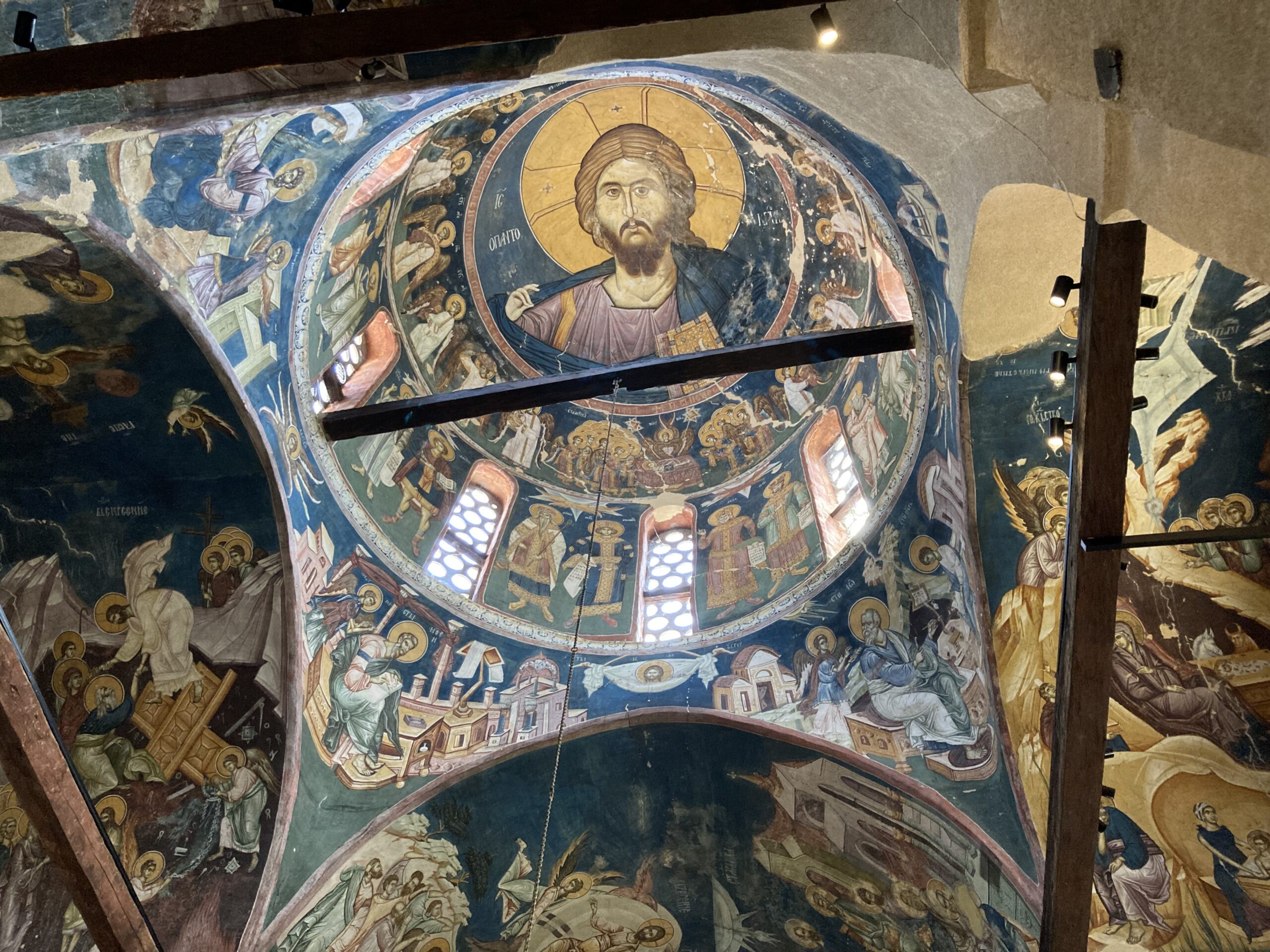
I was right in having high hopes for this place. Words cannot suffice in explaining the beauty one will come across in The Serbian Orthodox Patriarchate of Pec Monastery. The intricate details of its many religious depictions are unrivalled by anything else I have seen to date.

It may seem small on the outside, but inside, you will be greeted with four distinct halls with excellent Orthodox imagery covering all the surface area you can think of. A friendly nun was praying as I entered the building, and she did not mind me taking these photographs as I gasped with excitement and interest here and there.
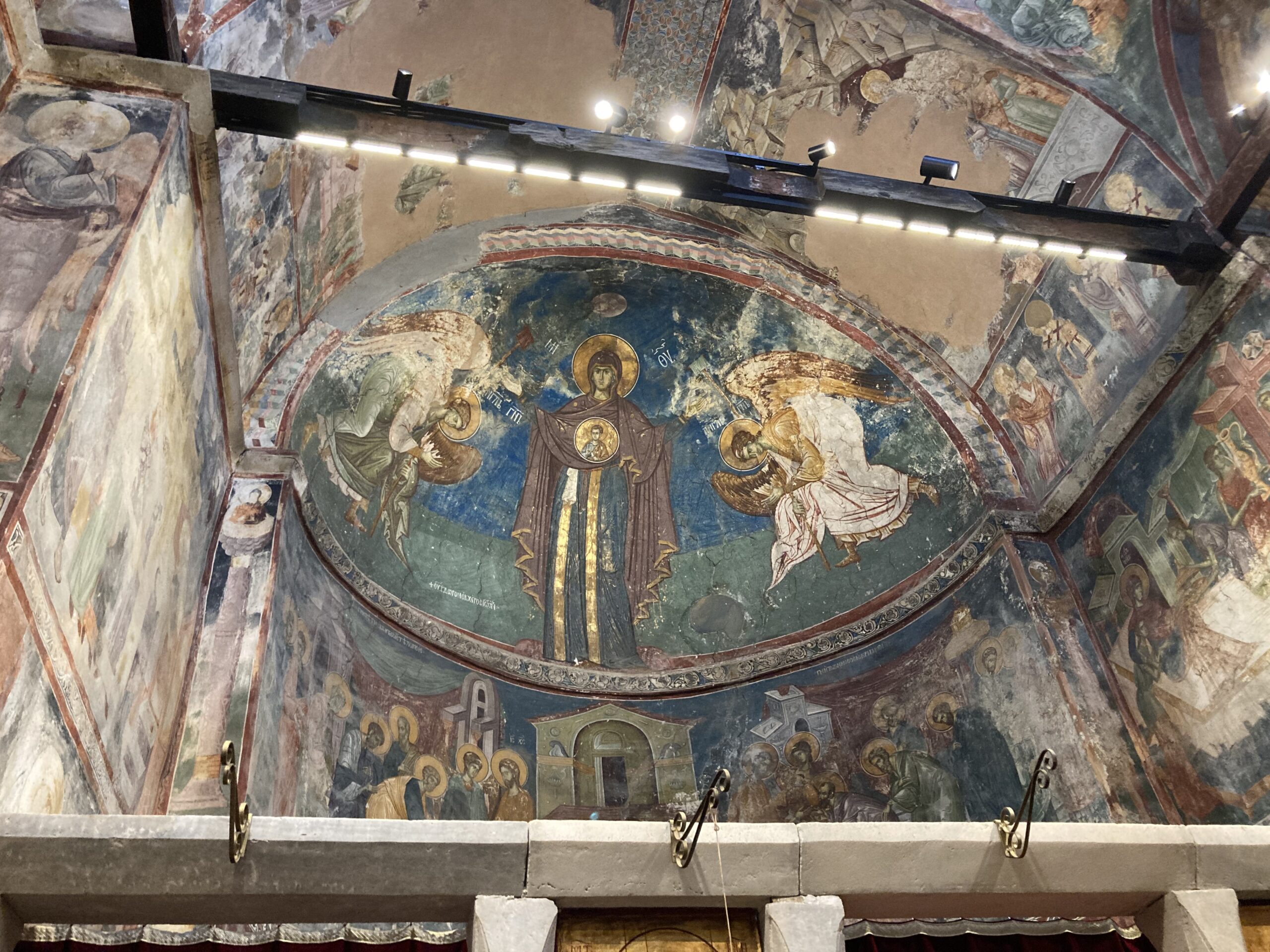
While some depictions were unfortunately damaged at some point in time, thankfully, most remained rather untouched so far. Furthermore, perhaps one of the most welcome bits of this holy site was the fact that it had some decent illumination. While some mosques and churches may rely on mostly natural lightning and a few improperly placed lambs, the lightning work in this site is impeccable. You can clearly see all the details that you want to see, and these lamps do not even get in the way of most photographs, for the most part.

Just look at this magnificent display! While natural lightning does come in handy in this particular example, the sharpness of the image is helped in no small way with the small yet efficient lamps that are directed towards the dome from multiple angles.
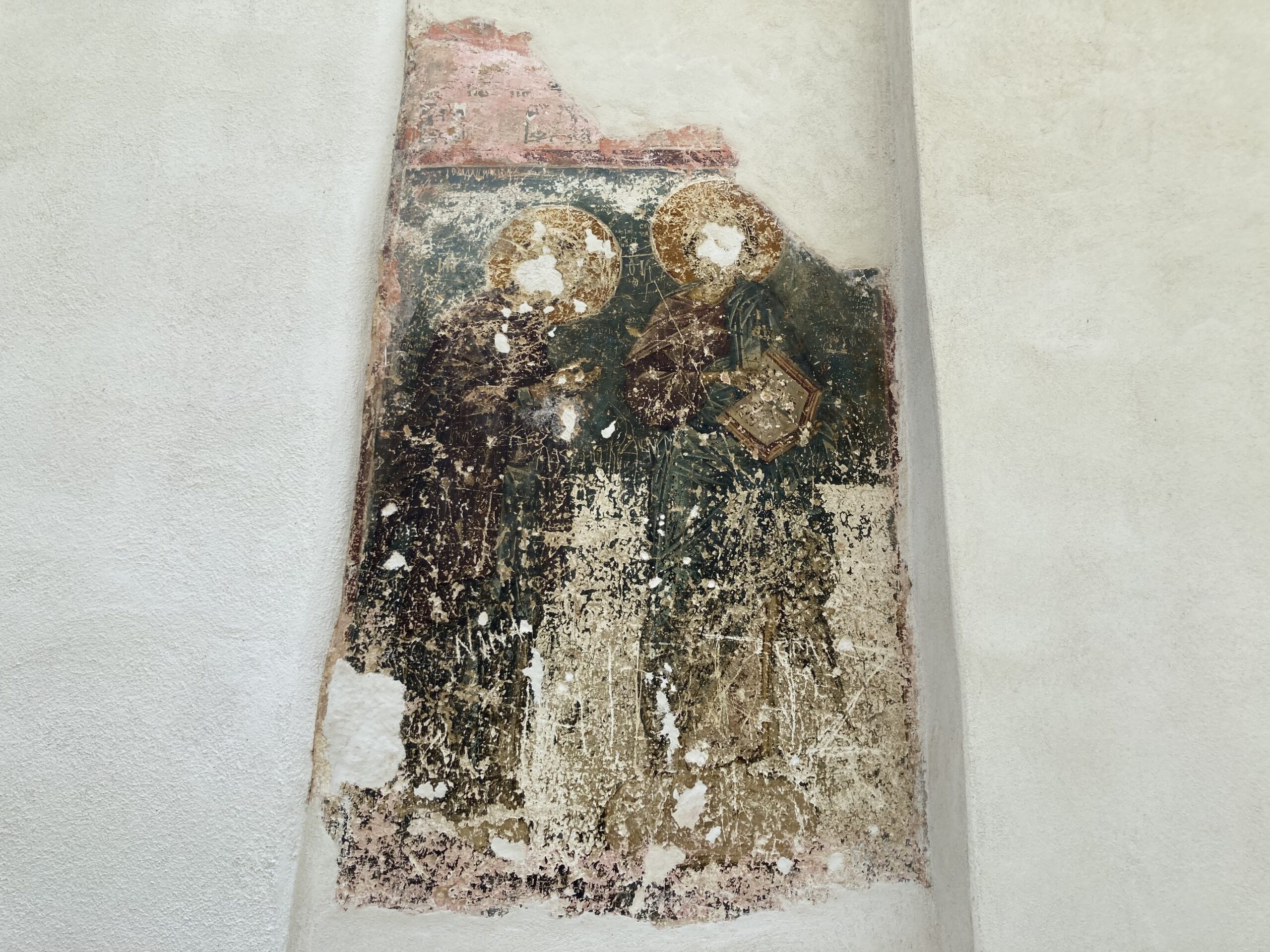
While the imagery on the inside is, for the most part, in excellent condition, the same, sadly, cannot be said for those on the outside. I did not even know that there were religious depictions on the exterior of this monastery, but apparently, there used to be quite many of them. Nowadays, there only remains a few mostly vandalized pieces as a reminder of the golden days of this holy site.
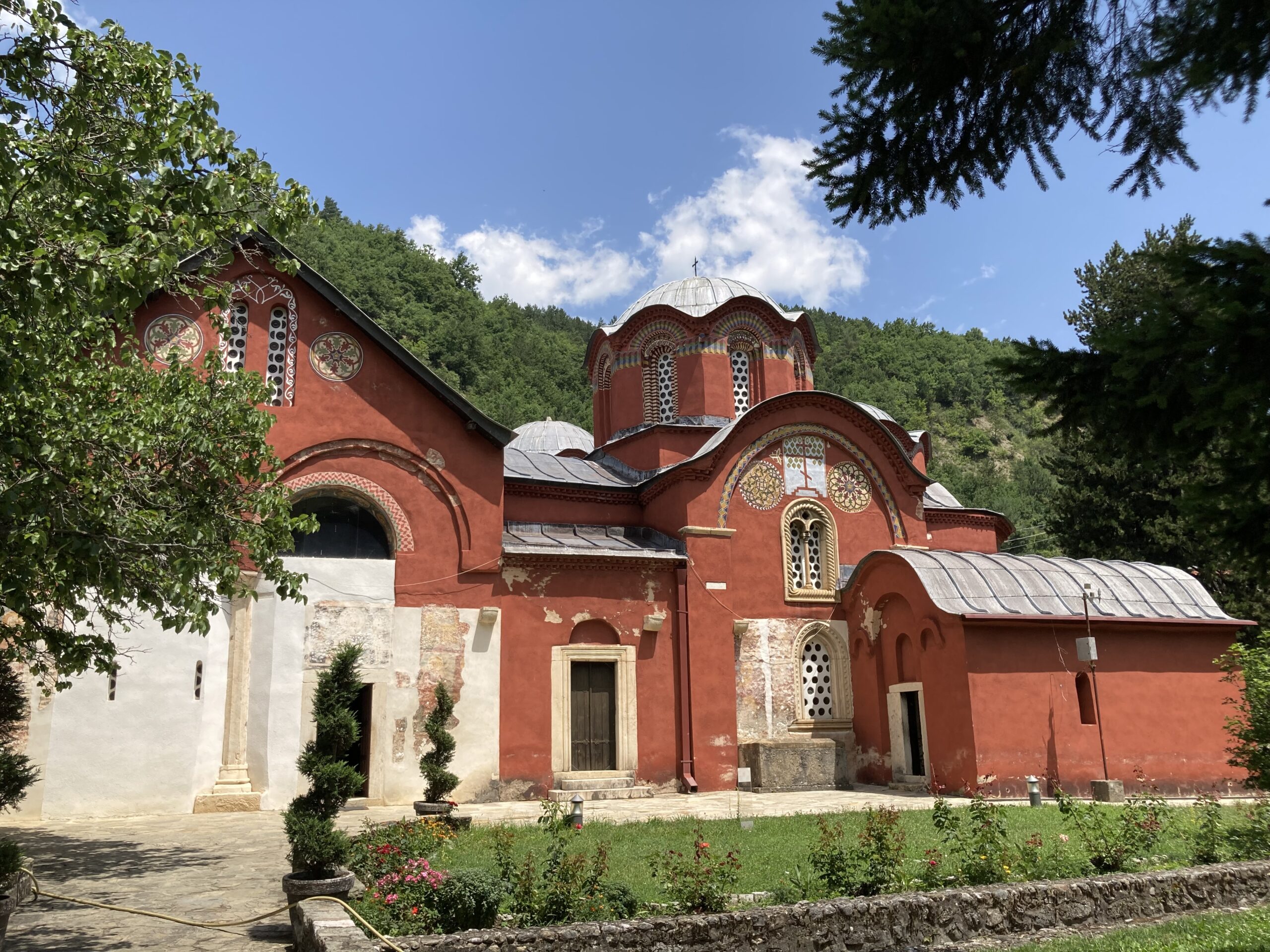
After spending a considerable time inside, it was, unfortunately, high time I left the monastery if I wanted to do anything else in the rest of the day.

Having a last good look at the beautiful courtyard this religious complex had, which even included the remains of an even older church that was once here, I slowly made my way back to Peja’s city center.
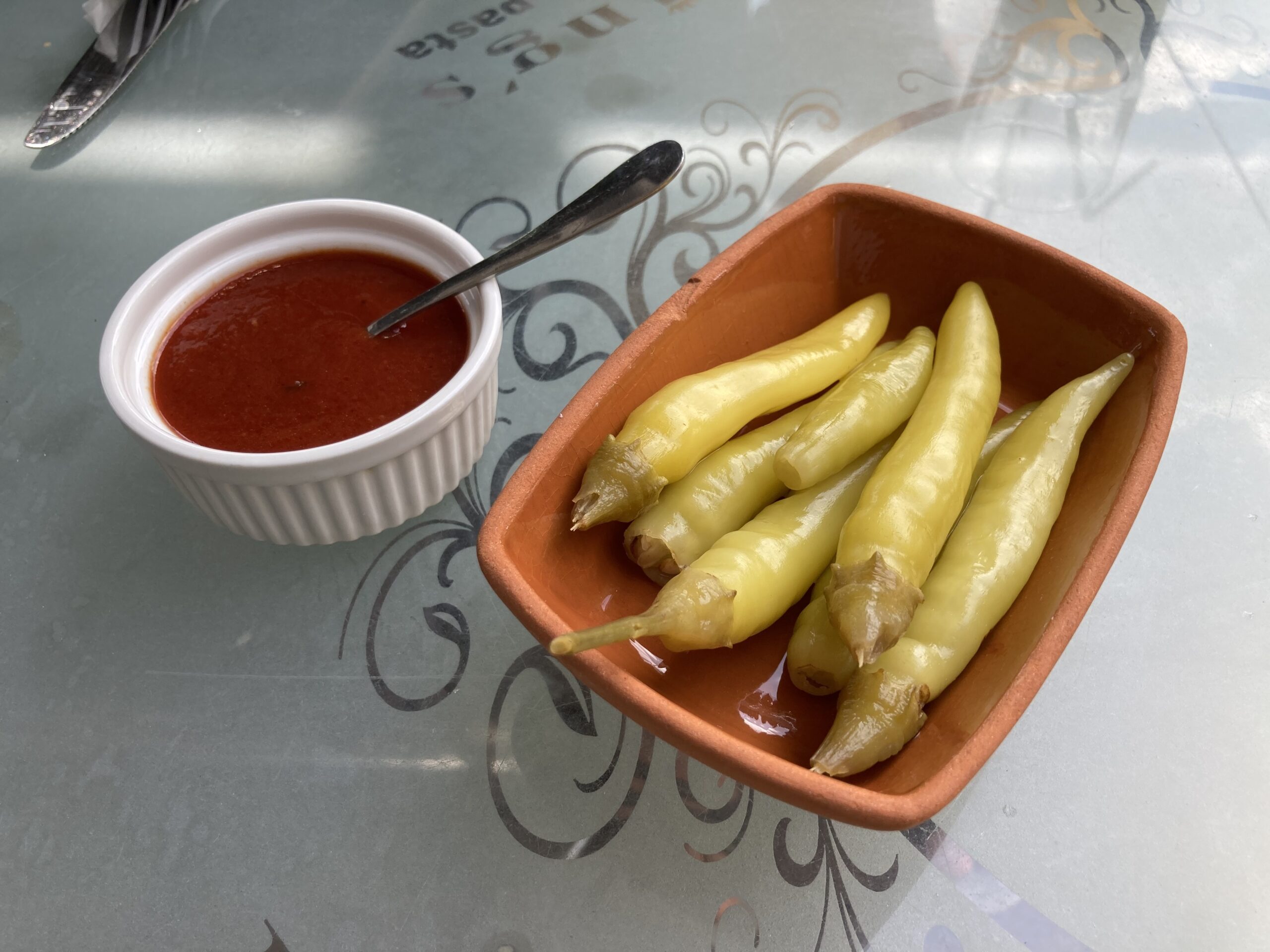
Truth be told, the main reason why I took my leave from the patriarchate had less to do with timing and more to do with the rumbling in my stomach. It was time to eat, and I had no plans to postpone my lunch. We sat at King’s, an Italian place owned by some of the friendliest people I met in Kosovo. They also served the spiciest pickled peppers in the region, which was certainly a welcome addition to the lunch!
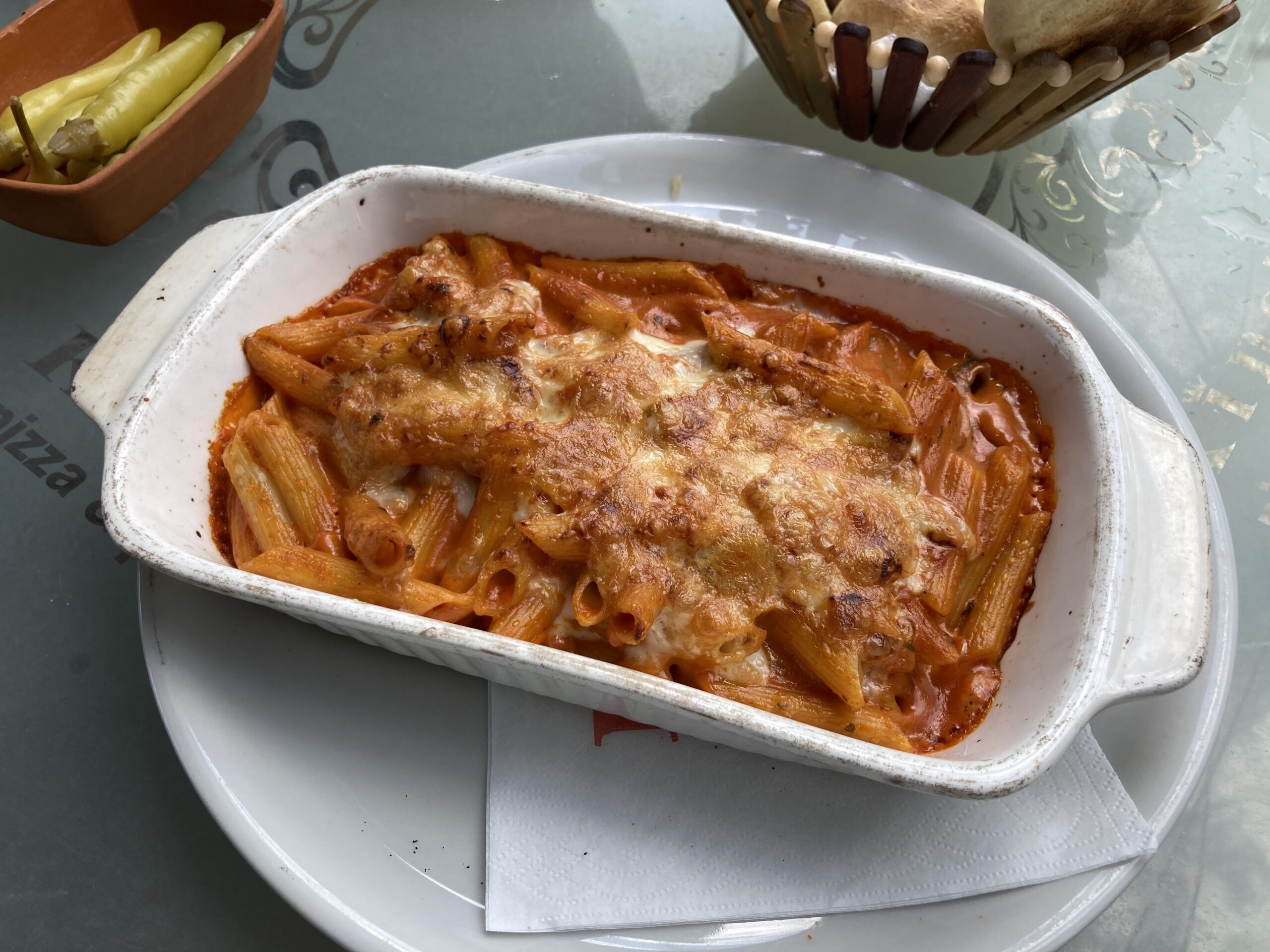
This place was recommended by many for its excellent service, and almost ridiculously cheap fares. Indeed, for less than 10 Euros, we had a feast for two in this friendly establishment. They made my baked pasta to order by removing the meat and adding a bit more mushrooms into the mix. My mother’s pasta was made according to her order as well, and the pizza we ordered just for good measure was pretty tasty, especially considering it costing only 2 Euros… This is not a spot you will want to miss if you end up visiting Peja.
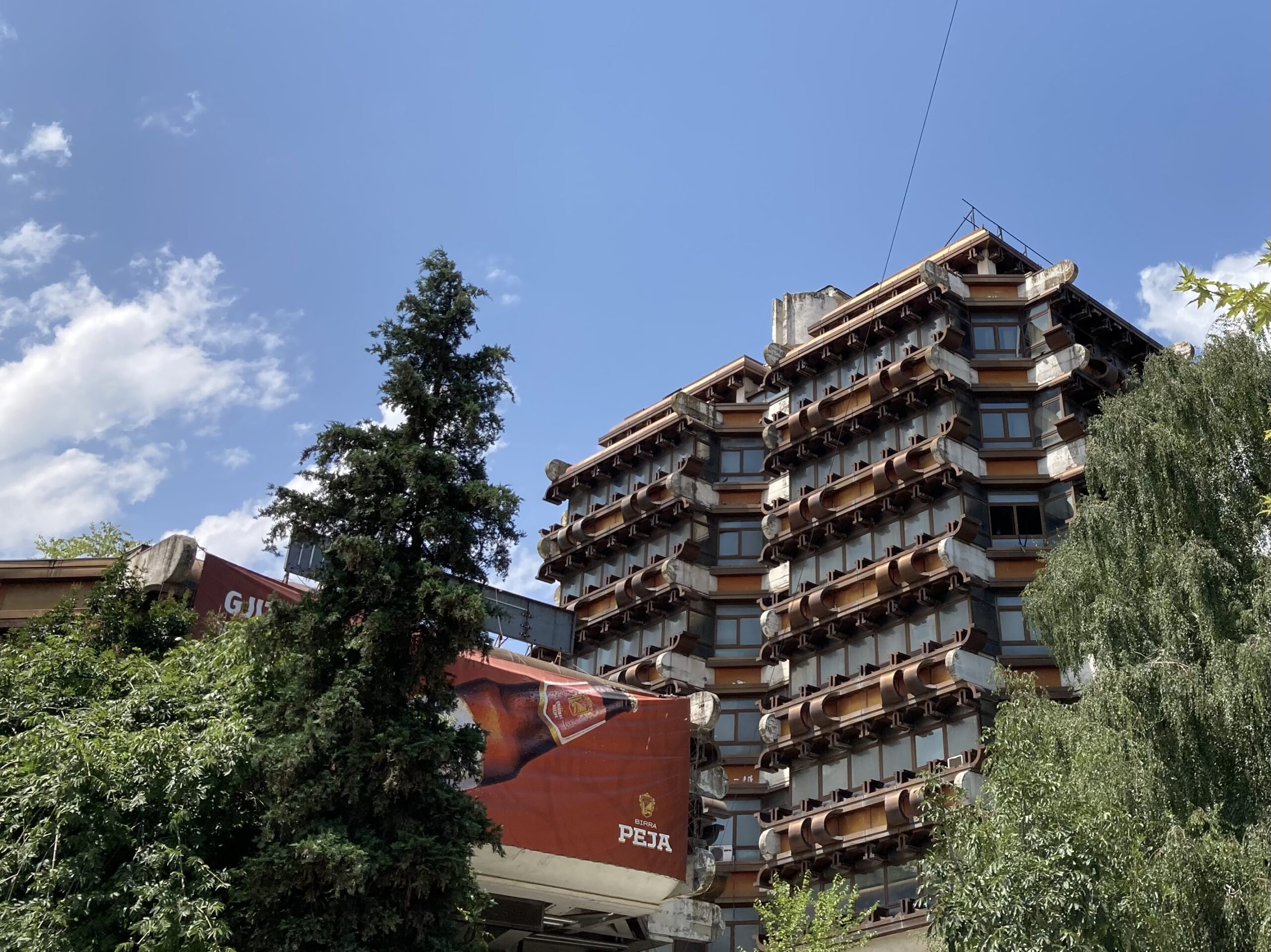
On my way back to the bus station, I came across this beauty. While I am not sure when this building was constructed, its copper painted pseudo balconies were a sight for sore eyes. Peja’s own beer brand, Peja, sticking its head towards this fine building was just the cherry on top.
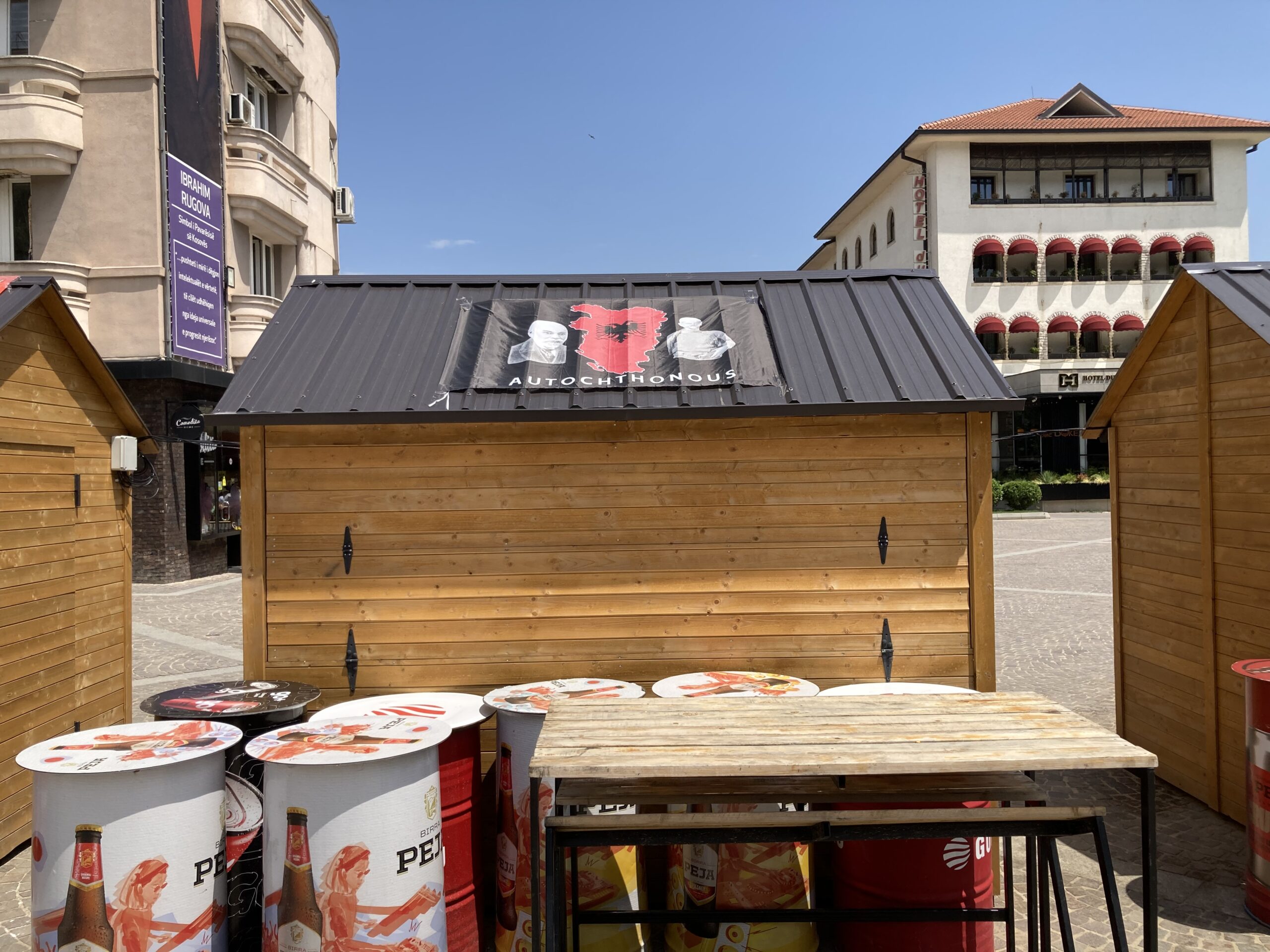
While I tried try my best not to do any political commentary on this series writings on Kosovo, I cannot help but share this particular booth with my dear readers. You can see a map of a greater, autochthonous Albania with some Albanian figures on the side for good measure. This, likely, belongs to a food stall in the center of Peja. While there are ethnic Albanians living in Kosovo, hence the whole conflict in the region, there are other ethnic Albanians living outside of the borders of modern Albania, in different neighbours, as well. These include Macedonia, Greece, and Montenegro. Similar maps are, of course, found across the region, and from different perspectives. It goes without saying that most of these maps claim same areas, over and over again. Just some food for thought to better visualize the region in one’s mind.
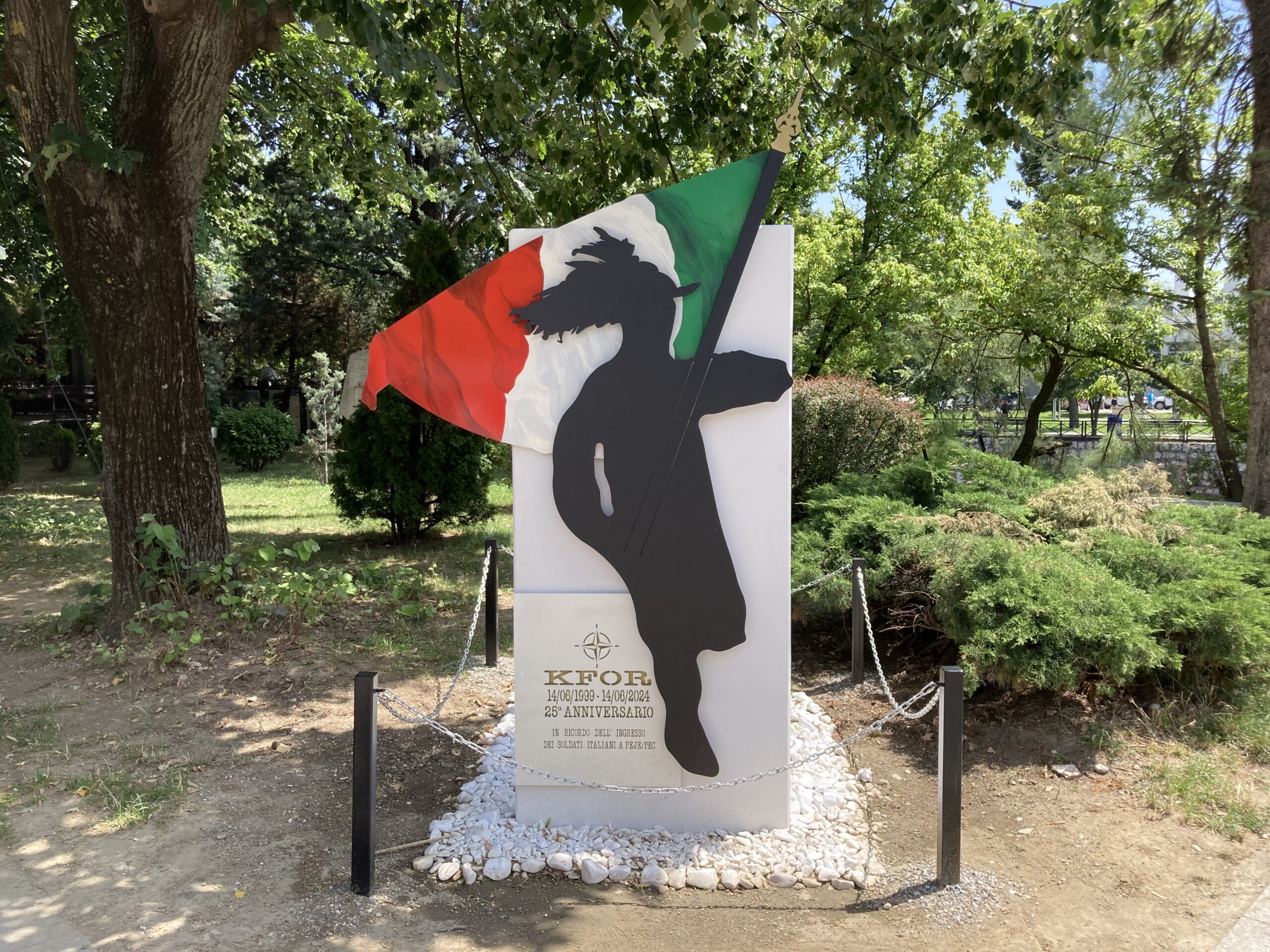
Of course, while irridentism and nationalism may be widespread in the region, not all parts of the Balkans shared the fate of Kosovo. This has to do with the foreign aid Pristina received, which was not the case for many other ethnic minorities elsewhere. Without NATO’s invasion or intervention, depending on the narrative that comforts you, Kosovo would not be Kosovo it is today. Memorials dedicated to those first NATO battalions that came as part of KFOR can be found all around the region as a result of that. The one I found in Peja was dedicated to the Italian soldiers specifically.
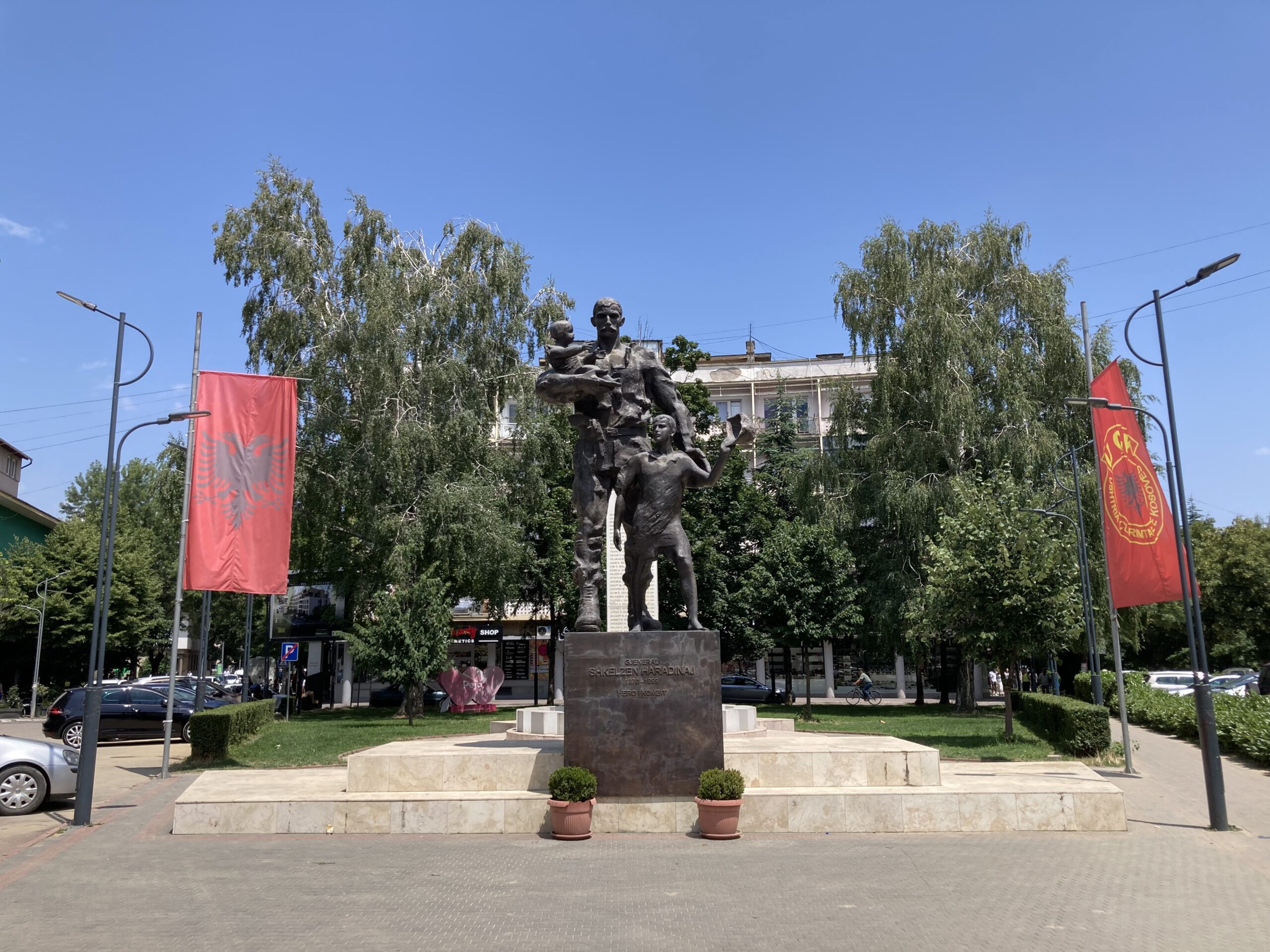
Other than some irridentist posters and a few monuments dedicated to the conflict in 1990s, one can also find plenty of Albanian (not Kosovar) flags, and even some flags that belong to the Kosovo Liberation Army. While Peja is known for its Serbian Orthodox history, clearly, the current heading of the city is an entirely different one. One can only hope that the future brings nothing but the best to the region, and all of its denizens, regardless of ethnicity and religion.
I wish I could end this article on a more cheerful note, especially given the fact that it has to do with my single most favourite destination in Kosovo, and perhaps, the Balkans as a whole. This gem of a town needs to be on all your Balkan itineraries, but it would be a lie to say that the story that this lovely town has is a peaceful one. Nevertheless, for the time being, you will have no issues traveling to Peja, and seeing all that it has to offer with your own eyes.
